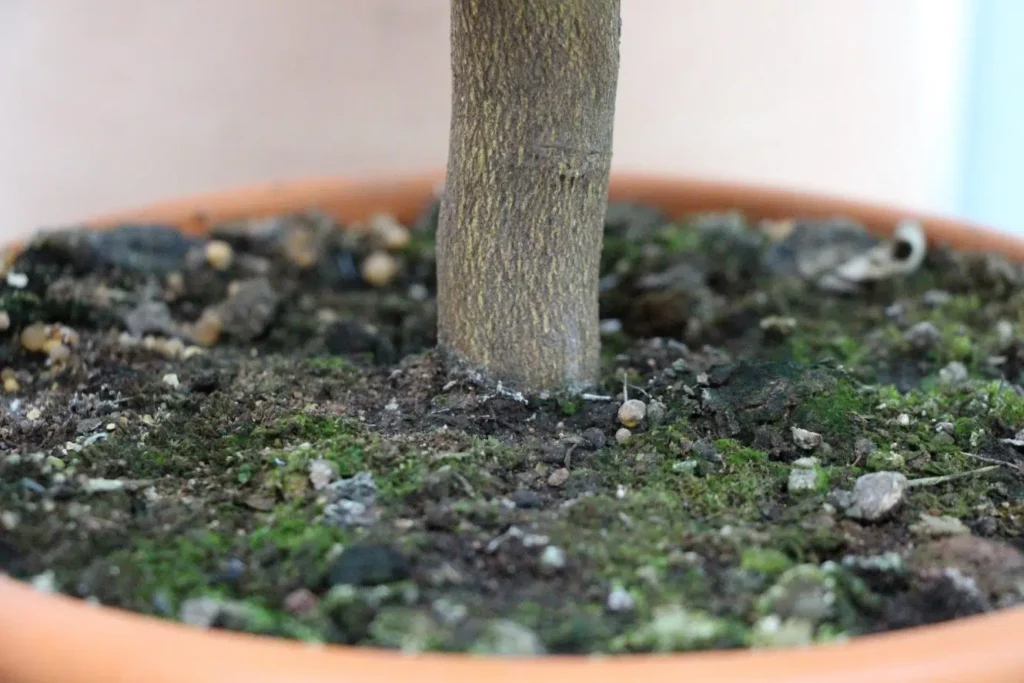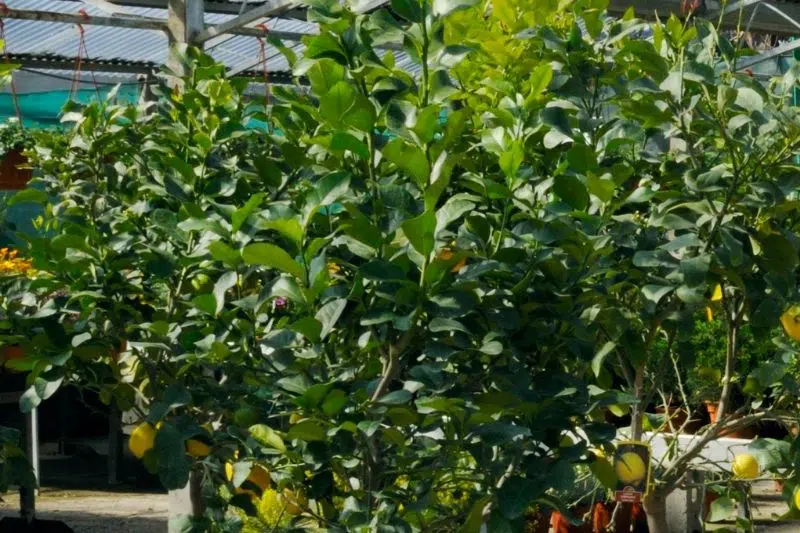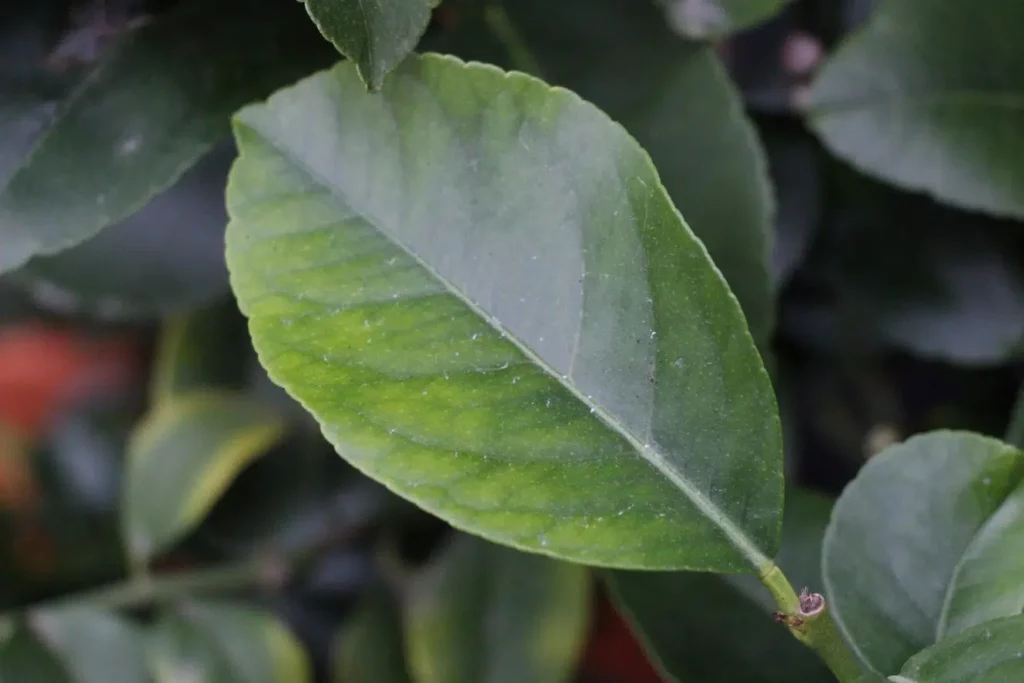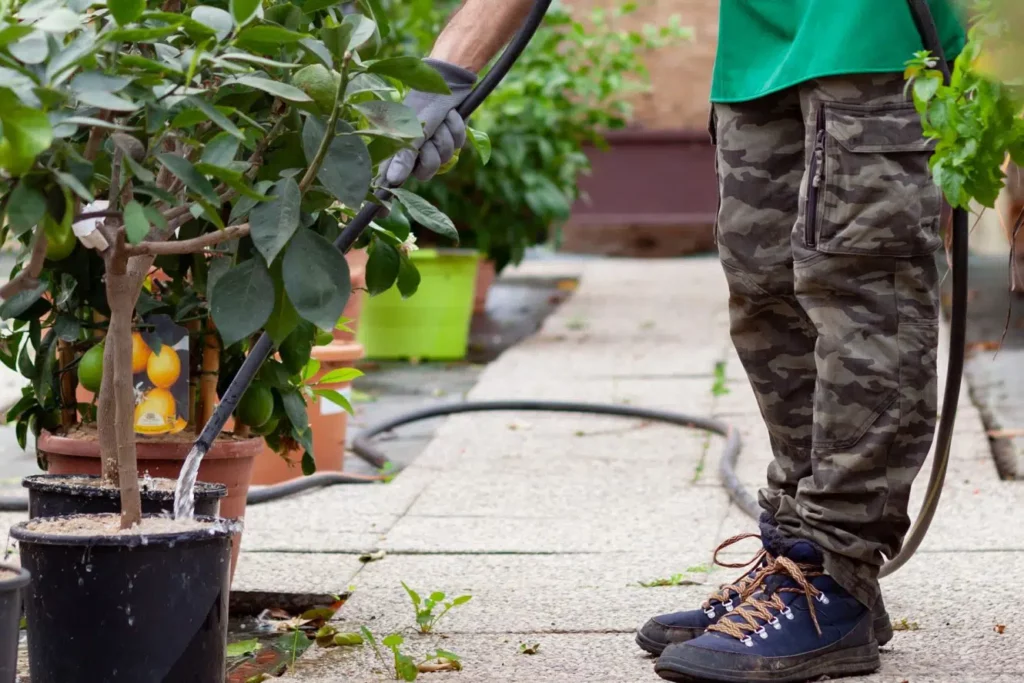Citrus trees are often kept as container plants. However, a lemon tree (Citrus x limon) quickly dries up with improper care. Read what are the causes and how you can save the plant.
- frequent cause of withered lemon trees waterlogging due to lack of drainage or too frequent watering.
- frost or incorrect overwintering as well as lack of water also cause drought damage
- Fungal diseases such as Fusarium wilt also possible cause
- vigorously cut away dried up parts of the plant
- provide fresh, only slightly moist substrate and a sufficiently large pot
Contents
- 1 Care errors
- 2 Waterlogging
- 3 Small pot / too little soil
- 4 Frost
- 5 Water little in winter
- 6 Water shortage
- 7 Diseases
- 8 Frequently asked questions
- 9 Can you radically cut back a lemon tree?
- 10 What to do about yellow leaves on the lemon tree?
- 11 Why does the lemon tree lose its leaves around winter?
- 12 Author
Care errors
In most cases, care errors are behind it when the lemon tree dries out. Even if at first glance it looks like drought damage: Watering is a cardinal mistake in this case! Refrain from it and before taking any measures, first try to find out the cause. To do this, it makes sense to poke out the lemon tree and take a closer look at the roots.
Tip: If you are unsure whether the little tree is still alive at all, score it at the lower end of the trunk. Is the wood there still green and juicy? Then the lemon is still alive and can sprout again.
Waterlogging
Often the lemon tree dries up because it has received too much water or the watering water cannot drain properly due to lack of drainage and the plant therefore has permanently wet “feet”. As a Mediterranean plant, the lemon does not need much water and can develop root rot due to excess moisture. Rotting roots are brown in color, soft to squishy and have an unpleasant odor.
Here’s how you can save the lemon tree:
- Unpot the tree and remove the soil completely
- Expose and loosen the roots
- remove brown roots and shorten white (= healthy) roots
- cut off dried branches
- Provide new pot with drainage layer
- Plant the tree in fresh substrate
Tip: Water much less in the future: during wintering, for example, one small watering per month is sufficient.
Small pot / too little soil
Too small a pot with little soil can also cause the lemon tree to dry out. If the roots are already growing out of the drainage hole and there is visibly little substrate in the pot, it is high time to repot. If there is a lack of space, the roots can no longer absorb enough water – the watering water practically flows past the edge of the pot, because the root ball is also often heavily compacted – and the tree dries out due to a lack of water.
These measures will help:
- Potting out lemon tree
- Loosen the compacted root ball vigorously and shorten it if necessary.
- place in a bucket of water and let it soak for 10 minutes
- Plant the tree in a much larger pot with fresh substrate.
- Do not forget a drainage layer on the bottom of the pot
- Water the tree regularly but moderately and repot it at least every 2 to 3 years, preferably in spring.

Tip: Special citrus soil is available in stores. You do not necessarily have to buy this, normal pot plant or green plant soil will do. Mix in some expanded clay or perlite so that the substrate is nice and loose and permeable.
Frost
Unfortunately, citrus trees are not frost-resistant and should therefore be brought indoors before the first sub-zero temperatures. If the plant does get frost, the affected parts of the plant may die. They will then look as if they have dried out. Affected saplings can still be saved:
- cut back vigorously to the living wood
- if necessary, shorten the roots and repot them
- overwinter cool (5 to 10 °C) and bright (no direct sun!)
Water little in winter
Have patience
It may take several months before the damaged lemon tree sprouts again. As long as the trunk is still green and juicy when you score it, there is hope and all you need is a little patience.
Note: Dead wood should always be removed, however, as this is also an entry point for pathogens.
Water shortage

Of course, too little water can also cause the little tree to dry up. Especially in winter, some amateur gardeners forget to water, so that in the spring it simply dried up. Again, as long as the trunk and some branches are still green inside, there is hope for re-sprouting. Proceed as follows:
- Unpot the lemon and place it in a bucket of water.
- Allow the roots to soak vigorously
- put them in fresh substrate
- cut back withered parts of the plant vigorously
Tip: Afterwards, always keep the substrate slightly moist, but avoid waterlogging.
Diseases
Not only care errors, but also fungal infections can cause lemon trees to wither.
Fusarium wilt
This is a wilt disease caused by tubular fungi of the genus Fusarium. These live in the soil and are often introduced through contaminated and undisinfected substrate. Typical symptoms of Fusarium wilt are:
- yellow leaves, which later fall off
- discoloration of woody plant parts
- withering and death of branches and shoots

Cut off infested plant parts as far as possible. Remove all substrate and thoroughly clean the planter. Place the lemon in fresh substrate, which you have previously disinfected in the oven at 100 °C.
Frequently asked questions
Can you radically cut back a lemon tree?
Among many amateur gardeners there is a rumor that you should not cut lemons. This is wrong! Especially a sick or withered citrus tree should be cut back vigorously – even radically to ten to 15 centimeter long stubs – so that it can sprout new healthy. But be careful: grafted lemons are often grafted onto other citrus species, so radical pruning can cause the rootstock (and not a lemon!) to grow from it. So always prune above the grafting point and just above an eye.
What to do about yellow leaves on the lemon tree?
If many yellow leaves appear on the lemon tree, yellowing disease is probably behind it. This can have various causes: Waterlogging, lack of water, lack of light, cold or wrong substrate. Place the sapling in a warm and preferably sunny spot, the substrate should have a slightly acidic pH between 5.5 and 6.5. If it is too alkaline, you can fertilize with coffee grounds to make it more acidic. Also, water only with rainwater, as tap water contains lime.
Why does the lemon tree lose its leaves around winter?
If the lemon loses its foliage in winter, it could be due to wintering too warm and / or too dark. If the temperatures at the overwintering site are more than 10 °C, this stimulates the sap flow and photosynthesis. However, if there is a lack of light, the sapling cannot carry out this program and the leaves lose moisture – they dry out and are shed. However, in the spring there is a good chance that the lemon will sprout new.


